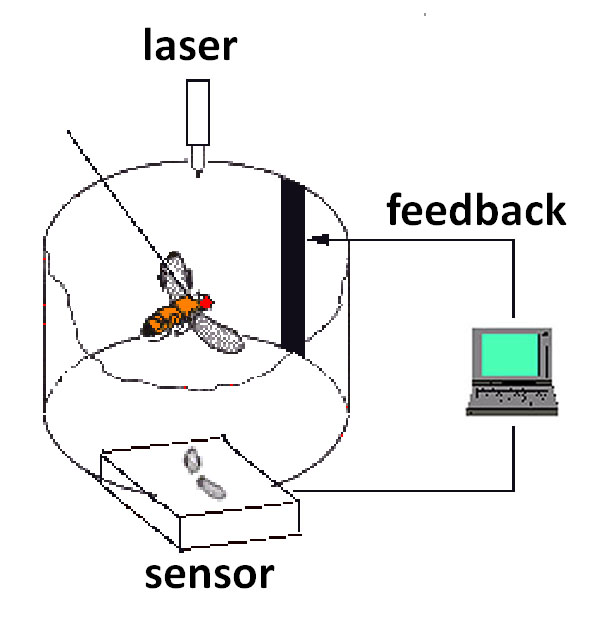Networks in the Fruit Fly Brain
(Collaboration with Prof. Ann-Syn Chiang, KIBM International Faculty)
 Brains are highly distributed systems in which many operations are executed in parallel. If there is no central processing unit, then what are the necessary interactions in the brain, and how are they coordinated and bound together to produce coherent percepts and actions? We believe that perception and recognition occur by the combinatorial interlinking of brain regions, and that recall of an image reactivates sensory pathways in reverse, ideas that we are testing in the fruit fly.
Brains are highly distributed systems in which many operations are executed in parallel. If there is no central processing unit, then what are the necessary interactions in the brain, and how are they coordinated and bound together to produce coherent percepts and actions? We believe that perception and recognition occur by the combinatorial interlinking of brain regions, and that recall of an image reactivates sensory pathways in reverse, ideas that we are testing in the fruit fly.
What can the fruit fly offer? The challenge inherent in understanding combinatorial activity in the brain is how to measure what is going on in many places at once. While fMRI solves the spatial aspect of this problem for humans, it operates on a time-scale that is much too slow for the actual neural events that lead to pattern recognition. Electrophysiological techniques can capture this time-scale, but are limited to sparse sampling of a few discrete regions of the brain at most, even in rats and mice. Optical recording, using probes that are calcium- or voltage-sensitive, offers a more comprehensive answer to the problem of sampling widely and quickly enough, but not if the brain areas are large or distant from each other. The fruit fly brain offers a potential solution to this quandary, being small enough to image in toto (or nearly so), and well established in the use of genetically encoded calcium sensors.
Are fruit fly brains relevant to cognitive function in humans, other than the fact that they use the same genes and cellular mechanisms? A few years ago, the answer would have been no, but two new lines of evidence challenge this assumption. The first is from the field known as “evo-devo”, studies of evolutionarily conserved patterns of gene expression in the nervous system. Studies in Drosophila and other invertebrates have revealed a surprising degree of similarity in comparisons with vertebrate embryos in the patterns of gene expression that delineate the early nervous system, and these similarities persist later into the differentiation of neuronal cell types), including putative counterparts of higher cortical structures.
Beyond embryology, our lab has found adult physiological correspondences as well, most notably in the circuitry and molecular mechanisms regulating sleep, and in our finding of specific brain waves (20-30Hz oscillations) associated with attention, a mechanism well established as being associated with important higher order cognitive functions in humans and other mammals, including attention and consciousness. In sum, the fly brain, with its greater accessibility, its unparalleled ability to be manipulated genetically, and the recent achievement of a first comprehensive map of its brain wiring, has the potential to reveal interactions among brain regions that correspond to those present in mammals, and thus to make predictions about what will be important interactions subserving recognition phenomena in the mammalian brain.


